Deborah Estreicher has become a familiar face on campus. Apart from an auto malfunction and two days of illness, she has driven here every day from Redwood City, to visit her 97-year-old father, Henry Estreicher. Deborah knows the nursing staff, the activities directors, the social workers, the physical therapists, the kitchen staff, the custodians, and many of the other residents. With the easing of Covid restrictions, the Estreichers’ journey to the Jewish Home & Rehab Center at the San Francisco Campus for Jewish Living (SFCJL) began in April 2022. Henry, weakened by a series of strokes, was ready to participate in a rehabilitation program. He arrived just in time for Passover Seder.
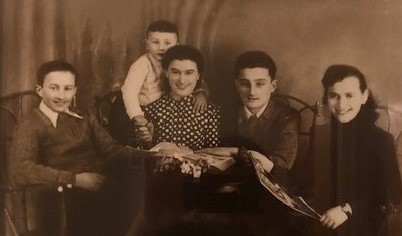
In addition to its fine reputation as a rehab facility, SFCJL’s Jewish roots and identity were an important factor in the decision for Deborah. SFCJL, especially the site where the Friedman Pavilion now stands, was dedicated to survivors of the Holocaust, and built with funds from heirless properties and institutions destroyed or confiscated by the Nazis. Both of Deborah’s parents were survivors of the Shoah. “My mother, whose soul ascended in 2013, was a passenger on the Kindertransport, fleeing Germany to England. My father, Henry, was 13 when Germany invaded Poland, in September of 1939,” Deborah said.
Born into the small, but growing, commercial, farming, and industrial community of Myszkow, Poland, Henry had a very happy childhood, growing up with his eight siblings and parents. They were a hard-working, observant family who cherished the free time they had together. Henry’s father was a rabbi, tutoring children in Jewish tradition. His mother was a balabusta – an excellent Jewish homemaker. The family’s primary income derived from a home-based shoe-making operation, managed by Henry’s eldest brother, Sru Yitzhak. His brothers designed and constructed the tops of shoes, which were then purchased by cobblers, who made the bottoms.
Comprising a third of Myszkow’s population, the town’s approximately 900 Jewish families had lived in relative harmony with their non-Jewish neighbors, shopping at the same stores and working closely together. In 1939, everything changed.
Henry’s elementary school was forced to close. The school’s principal, as well as Henry’s uncle were arrested. It became illegal for Jewish people to gather at the synagogues. Henry celebrated his bar mitzvah in secrecy in the family’s basement, where a Torah was smuggled out of his synagogue for the occasion. Henry and his family were made to work, without compensation, for the German invaders. The only consolation was that they remained together. In 1942, the family was uprooted from their home and forced into the cramped and miserable dwellings of the Zawiercie Ghetto, nine miles south. In 1943, the family was transported by cattle car an hour further south to Auschwitz, where they were separated upon arrival. The next several years would bring more heartbreak. After being transferred to the Warsaw concentration camp, where he was put to work recycling bricks and metal, and fell ill from typhus, Henry was taken to Dachau in 1944. From there, he was assigned to work in an underground German airplane factory in nearby Mildorf.
In 1945, when Henry was 18 years old, he and more than 1,000 other prisoners were loaded onto trains bound for their murder in a remote location in the Polish mountains. General Patton’s Third Army intervened. On April 29, 1945, Henry was liberated one week before his 19th birthday.
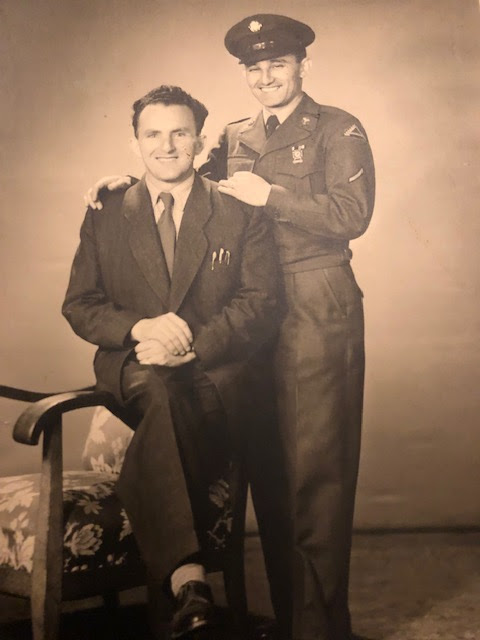
After recuperating in Germany, in an SS youth camp turned safe haven by the American military, Henry decided to return to Russian-occupied Poland in the hopes of reuniting with family members and friends. “Following his nose,” and traveling at various times on foot, by train, and by buggy, due to the lawlessness of the time, Henry arrived in Myszkow. He reunited with his three brothers but remained there for only a few weeks. Learning that most of his family had been murdered by the Nazis and of two young Jewish siblings who had survived the war, only to be murdered by the Poles who had taken possession of their home, he decided that there was no future for him, nor any Jewish person in Myszkow. He returned to Germany and lived in Feldafing, a displaced persons camp near Munich.
In 1949, at the age of 24, Henry’s uncle was finally located in Philadelphia, and he was able to come to America. His stay was brief. Before he turned 26, Henry was drafted into the U.S. Army. Sent to Fort Knox, Kentucky for boot camp, Henry became a proud member of the Third Armored Division, the same unit that saved his life.
Henry learned how to drive a tank at Fort Knox and was trained as a sharpshooter. By the time he graduated, the Korean War had just ended, and the Cold War was in full swing. Henry was sent back to Germany. “It was very therapeutic for my Father to serve in the U.S. Armed Forces there,” Deborah said. “His German language skills proved to be very useful. Preventing what might have been a disastrous entry of his brigade into Russian-occupied territory, he was dubbed ‘Little Einstein’ and promoted to the rank of corporal.”
After his military service, Henry returned to the United States and opened a small grocery store in Milwaukee, Wisconsin. There he met his future wife, Thea. “Speaking in German, the first question he asked of her was whether she was in love with anyone,” Deborah said. “I didn’t want to waste time,” said Henry.” Henry and Thea married on July 4, 1955, made their home in Milwaukee and then California, and along the way, had four children.
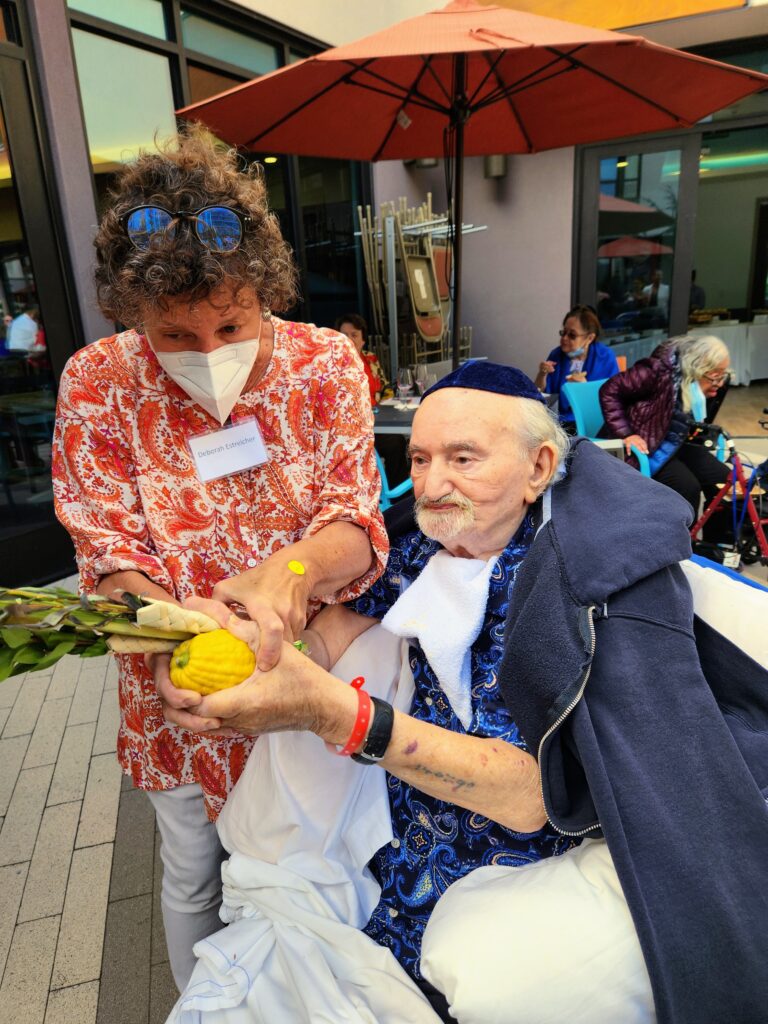
Deborah’s parents taught her much about fortitude, resilience and endurance. “As a daughter of parents who survived the Shoah, I have a love of the Jewish people and a devotion to Israel and the democracy of the United States,” she said. “The biblical passages of ‘Remember that you were once slaves in Egypt’ and that ‘All are created in the image of G’d’, run constant through my veins.”
Similar Jewish values and teachings are also woven into the fabric of our campus, which was originally founded in 1871 as the Pacific Hebrew Orphan Asylum and Home Society. For Deborah, SFCJL’s Jewish foundation is a significant part of why she and her family chose it over other options. “My father is free to live as a Jewish person and wear his yarmulkes in comfort,” Deborah said. “At the SFCJL there is a rabbi, a synagogue, Kosher food and celebrations of Jewish holidays. There is also a team of devoted security staff, (enhanced when necessary) to ensure the safekeeping of all. The skill, care, and kindness of many of the medical, nursing, and adjunct staff must also be acknowledged.”
On a recent Wednesday afternoon, Henry, wearing his signature brightly colored yarmulke, and Hawaiian print shirt, worked hard at his physical therapy, lifting his legs in time while the physical therapist counted each set. “He always gives 110%, even when he’s not feeling his best,” remarked the therapist.
“That’s my father,” said Deborah. “He is an optimist. No matter how cruelly he was treated in his life, he always believed that things would turn out alright. Perhaps my general sense of optimism (albeit a wary sense of optimism) is derived from this.”
Henry died May 14, 2024, shortly after his 98th birthday. He is survived by his children, Deborah, David and Mike, his son-in-law Jeffrey Wexler and three grandchildren, Nathan, Naomi and Tamar Wexler. He was pre-deceased by his beloved wife Thea and daughter Rebecca Wexler. May his memory be a blessing.
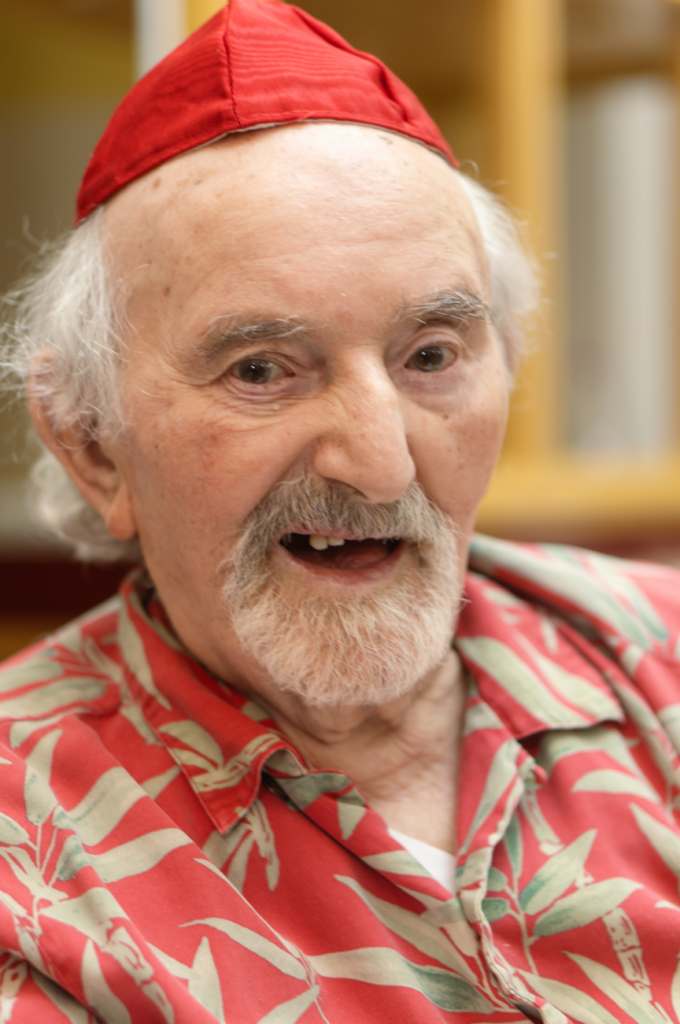
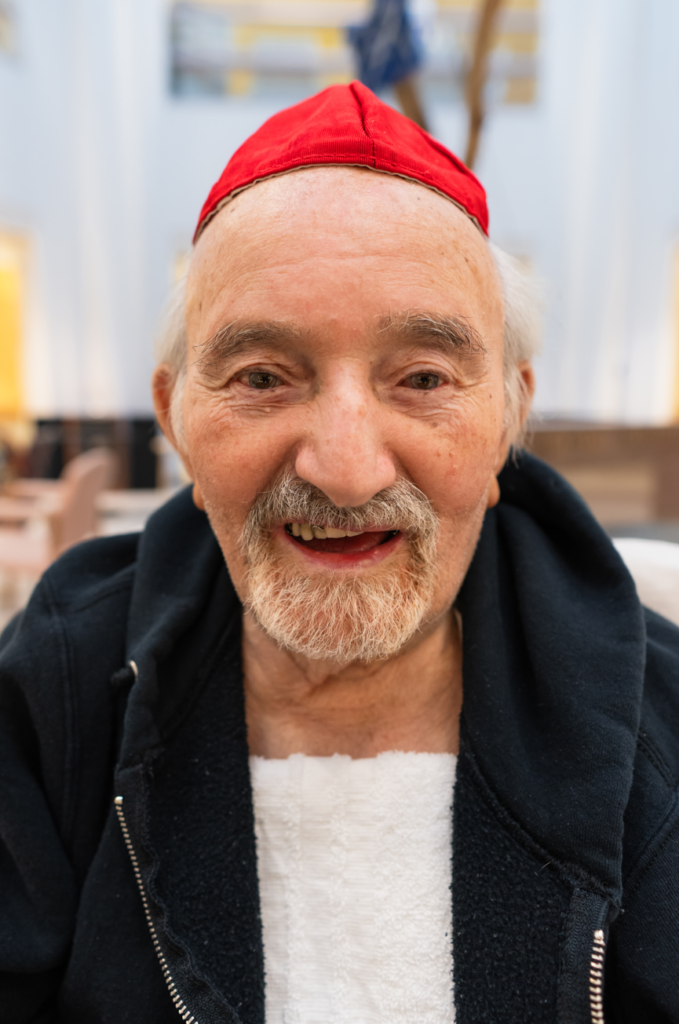
Above: Henry smiling wearing his signature yarmulke (both photos by Christian Harris)
